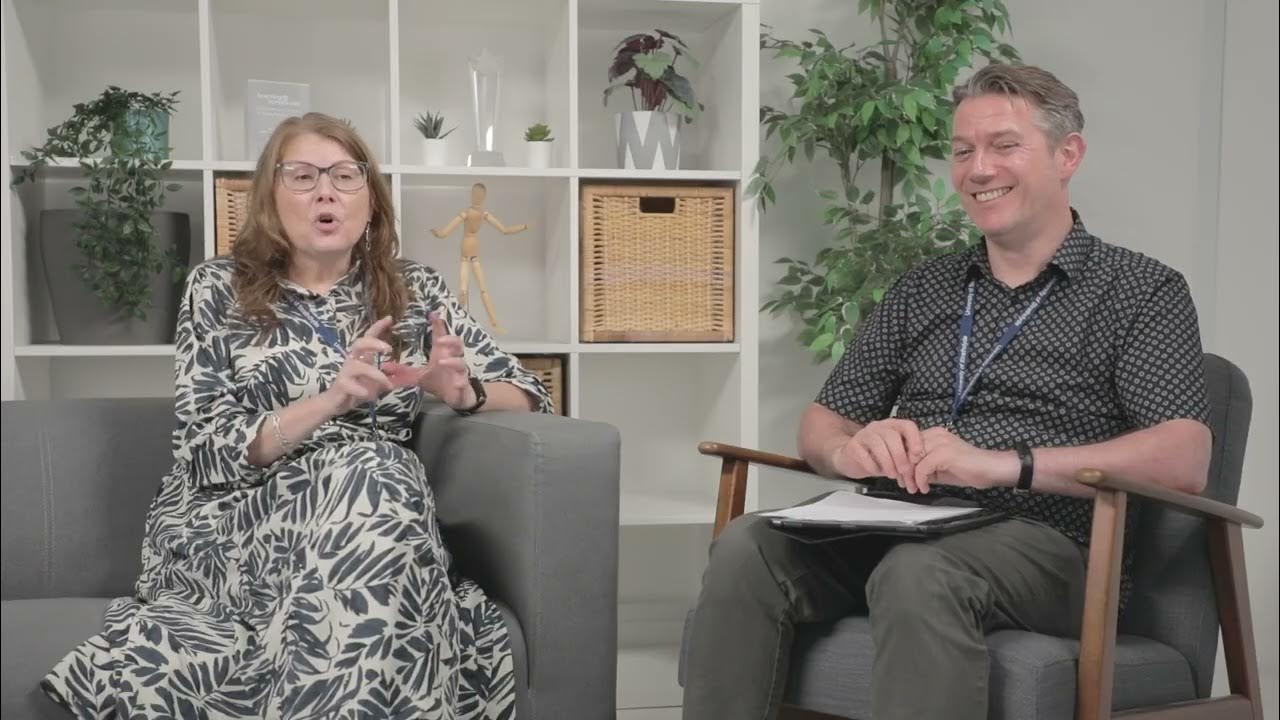AODA and Human Rights Code: Be an Accessibility Ambassador
Summary
TLDRThis video provides guidance on promoting accessibility and inclusivity at a university. It encourages staff, students, and faculty to consider key questions related to accessibility, such as ensuring dignity, flexibility, wheelchair accessibility, inclusive language, and accessible hiring practices. The video emphasizes the importance of integrating accessibility into course design, event planning, and workplace accommodations. For support, viewers are directed to resources such as the McMaster accessibility office and the equity inclusion office for further assistance and information.
Takeaways
- 🎓 University staff, students, and faculty are encouraged to adopt accessible and inclusive practices.
- 🤔 Key questions include whether accessibility provisions promote dignity and respect.
- 📚 Flexibility in assignments, tests, and classes should be considered.
- 🦽 Ensure event or class locations are wheelchair accessible.
- 🚻 Check if accessible washrooms are nearby.
- 📑 Documents should be made screen reader friendly.
- 🗣️ Use inclusive language and have strategies to address ableist or oppressive language.
- 👩💼 Accessibility should be considered in hiring practices and workplace accommodations.
- 📝 Accessibility statements should be included in syllabi and event promotions.
- 🏗️ Build accessibility into the design of courses, renovations, programs, or events.
Q & A
What is the primary focus of the video script?
-The video script focuses on promoting accessible and inclusive practices at the university, offering questions that staff, students, faculty, and instructors can consider to ensure accessibility in their areas of work or study.
Why is it important to promote dignity and respect in accessibility provisions?
-Promoting dignity and respect ensures that accessibility provisions do not stigmatize or patronize individuals but instead support their equal participation and integration in all activities.
What role does flexibility play in accessibility in assignments or tests?
-Flexibility in assignments or tests allows for accommodations that can meet the diverse needs of students, making the learning environment more inclusive for those with disabilities.
How can the physical environment of an event or class affect accessibility?
-The physical environment, such as the location being wheelchair accessible or having accessible washrooms nearby, can significantly affect whether individuals with mobility impairments can participate fully in the event or class.
How can documents be made accessible for individuals with disabilities?
-Documents can be made accessible by ensuring they are screen reader-friendly, allowing individuals with visual impairments to easily navigate and comprehend the content.
What is inclusive language, and why is it important?
-Inclusive language avoids terms or expressions that might exclude or offend certain groups. It fosters a respectful environment where everyone feels recognized and valued.
What strategies can be used to interrupt ableist or oppressive language?
-Strategies include calling out problematic language, educating others on its impact, and fostering a culture of respect and understanding to prevent further use of such language.
How can accessibility be incorporated into hiring practices?
-Accessibility in hiring practices can be incorporated by ensuring job postings are accessible, offering accommodations during the interview process, and making staff aware of their legal right to workplace accommodations.
Why is it important to include an accessibility statement in course syllabi or event promotions?
-Including an accessibility statement makes it clear that the course or event is committed to providing accommodations, helping to set an inclusive tone and ensuring all participants are aware of available support.
What resources are available for individuals at McMaster who want to learn more about accessibility?
-Individuals can visit www.accessibility.mcmaster.ca or email [email protected] for more information on promoting accessibility. The Equity Inclusion Office also provides resources at equity.mcmaster.ca.
Outlines

Этот раздел доступен только подписчикам платных тарифов. Пожалуйста, перейдите на платный тариф для доступа.
Перейти на платный тарифMindmap

Этот раздел доступен только подписчикам платных тарифов. Пожалуйста, перейдите на платный тариф для доступа.
Перейти на платный тарифKeywords

Этот раздел доступен только подписчикам платных тарифов. Пожалуйста, перейдите на платный тариф для доступа.
Перейти на платный тарифHighlights

Этот раздел доступен только подписчикам платных тарифов. Пожалуйста, перейдите на платный тариф для доступа.
Перейти на платный тарифTranscripts

Этот раздел доступен только подписчикам платных тарифов. Пожалуйста, перейдите на платный тариф для доступа.
Перейти на платный тарифПосмотреть больше похожих видео

AODA and Human Rights Code: Who are people with disabilities at McMaster

Getting Closer with Tari: Accessibility in Digital Spaces (Pt 2) - Kontribusi Design dalam A11y

PENJELASAN JAWABAN DARI SOAL UTS FILSAFAT PENDIDIKAN

We are Strathclyde - Welcome Session - 18.08.2025

How Audio Description opens new worlds in video games | BBC News

15+ NEW iOS 18 Features Confirmed!
5.0 / 5 (0 votes)
